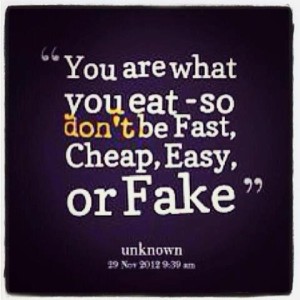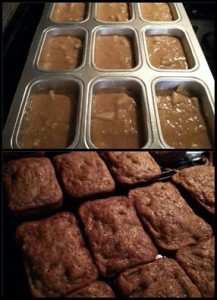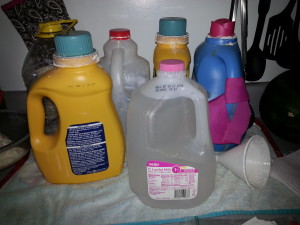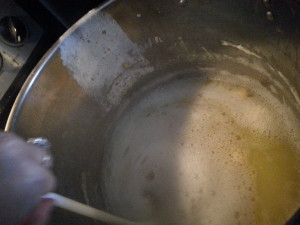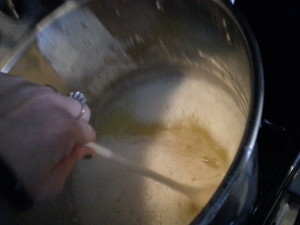Gluten: Testing your Tolerance with “The Elimination Diet”
~
Many people who suspect they have a gluten intolerance or issue often jump right into the doctor at first symptom. Normally at that first appointment, you’ll tell the doctor your issues, give him your list of what you consider your “trigger” foods, and you’ll patiently await his diagnosis. But most likely what you’ll get, is that in order for a diagnosis for what does indeed sound like a gluten intolerance, you’ll need to keep months of a food journal first. Here’s where I would usually tell you to go straight to the doctor with your issue! Well…not this time.
When it comes to testing your gluten, it really isn’t rocket science. Think back to the times when your children were infants, and you were introducing new foods to them. The rules were to start bland, take 3-7 days on each new food (depending on where you got your info, of course), and cautiously watch like an overbearing hawk if there were any adverse signs of a reaction. To test your gluten sensitivities, you need to do the opposite, sort of. Say you eat a lot of bread in your diet. You could start by removing bread, but nothing else from your diet. Some people start with dairy, and remove that completely before anything else. This part is solely up to you, but remember to only take away ONE thing at a time. This is NOT a fast process. It’s taken me years, and probably would have taken longer, except that I went to clean eating instead! (So, now my screw ups are mostly on purpose while indulging myself with comfort food, or cream cheese…)
Anyway, once you’ve taken a food completely away for a few weeks, then you slowly start to reintroduce it back in to your diet. If you see signs of reaction, then you’ll know more of what it causing which symptom to occur.
The following list gives an example of what to include and exclude during an elimination diet.
Foods to include are in BLUE Foods to exclude are in RED
Fruits Almost all fresh fruit Citrus fruits (extremely acidic varieties)
Vegetables Almost all fresh raw, steamed, sautéed, or roasted vegetables
Tomatoes, eggplant, potatoes (sweet potato & yams okay)
Starch Rice*, buckwheat*
Wheat, corn, barley, spelt, kamut, rye, oats, all gluten-containing products
Legumes Soybeans, tofu, tempeh, soy milk, all beans, peas, lentils
Nuts and seeds All seeds and nuts
Meat and fish Fish, turkey, lamb, wild game
Beef, chicken, pork, cold cuts, bacon, hotdogs, canned meat, sausage, shellfish, meat substitutes made from soy
Dairy products and milk substitutes
Unsweetened rice milk*, almond milk, coconut milk
Milk, cheese, cottage cheese, cream, yogurt, butter, ice cream, non-dairy creamers, eggs
Fats Cold-expeller pressed olive oil, flaxseed oil, coconut oil
Margarine, butter, processed and hydrogenated oils, mayonnaise, spreads
Beverages Drink plenty of fresh water, herbal teas (e.g. rooibos, peppermint, etc.)
Alcohol, caffeine (coffee, black tea, green tea, soda)
Spices and condiments Sea salt, fresh pepper, fresh herbs and spices (i.e. garlic, cumin, dill, ginger, oregano, parsley, rosemary, thyme, turmeric)
Chocolate, ketchup, mustard, relish, chutney, soy sauce, barbecue sauce, vinegar
Sweeteners Stevia (if needed)
White or brown sugar, honey, maple syrup, corn syrup, high fructose corn syrup, desserts
*May also be removed if you suspect specific sensitivities to grains.
The keys to not becoming overwhelmed with figuring out what you can and cannot eat is to just keep trying, and never give up! It’s so different for everyone! The list above is pretty invasive, and there are less invasive elimination diets you can follow, too. Don’t rush this!! Did I mention that yet?
What should I watch for, body-wise?
With any diet, especially the elimination diet, you need to pay attention to your body. You’ll want to monitor everything from your mood, energy level, digestion changes and bowel habits. Not to mention your sleep habits and routines, too. It may be advisable to write all of this down in the same journal, so that when presenting this to your doctor at any point will be very simple.
SIDE NOTE: You can tell how important this journal is. Daily, it should have your food intake for the day, including any and all snacks. How you’ve felt, and are feeling…and how you’re sleeping. Physical and mental changes, too. It’s important to do this for your child, too, if you’re suspecting food allergies. A well kept food journal could be the difference between a diagnosis and treatment NOW, or a diagnosis and treatment 6 months from now.
Another thing to watch for are your symptoms, both negative or positive, during the elimination diet process. Negative reactions can include any of the following, and they can occur all at once, or one at a time.
-insomnia
-fatigue
-joint pain and/or inflammation
-skin breakouts or rashes
-headaches
-bowel changes or GI pain
-bloating
-brain fog
-sinus or other respiratory issues
Because you’re taking one thing out at a time, and reintroducing things slowly…these types of changes will be easier for you to pick up on. Make sure to keep that journal, and log ALL reactions, whether they are positive or negative.
Another way to test: The Pulse Test
Here’s another way you can keep a tight watch on your body during the reintroduction of foods, and it’s the Pulse Test. Every morning, first thing after sitting up for about 5 minutes, take your resting pulse rate for one minute. Then consume the food that you’ve decided to reintroduce for the time. Next retake your resting pulse every 20 minutes for two hours. (So, you’ll have a reading at 20 minutes, 40, 60, 80, 100, and 120 minutes)
Any change in pulse, either increased or decreased, greater than 10 beats per minute, can show a sensitivity to a given food. Repeat the test again later in the day after another attempt with the same food tried in the first “experiment.” This can signify a food intolerance. However, as many people know, pulse rates can change for many different reasons. So take this for what it’s worth, and if there’s a change, log it in the ole journal to show to your doctor when you’re ready.
Tips for Success with the Elimination Diet
~
Be Prepared. Inform yourself and ready your house for the changes. This may mean meal planning for the week, and warning your family of your different menu selections.
Clean the kitchen. And not just the counters. Go through your cupboards, and pantry. Get rid of the foods that are coming up in your tests showing that you have a sensitivity to.
Go Shopping. Have the foods you’ll need for the first few days already in the house, and ready to go. Don’t set yourself up for cooking something totally new to you for your first dinner. Make sure you at least know what you’re up against.
Don’t rely on Memory. WRITE IT ALL DOWN!!
Remember- food has the power to promote good health and well being, or it can worsen diseases. The choice is yours to make!
Resources Used:
Mayo Clinic
Riley Hospital
